| Columns Retired Columns & Blogs |
And his wife standing on the porch with her arms folded tight.
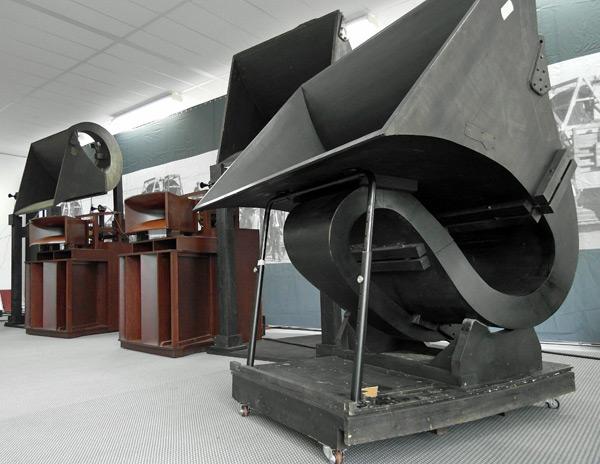
I'm a person of faith, and I do try my best to sin as little as possible. Yet within 10 seconds of entering the Silbatone Audio room—seconds occasioned by a multisensory experience as shocking as it was pleasant—the first words that escaped my lips were "Jesus tap-dancing Christ on a cracker." I was hearing Maria Callas sing an aria from an Italian opera unknown to me; I was seeing a long wall of enormous loudspeakers, the largest of which was a pair of exceedingly rare Western Electric 13A horns made for Warner Brothers in 1926, not long before Al Jolson's first talkie. I was listening to the world's first hi-fi system, and I would argue with no man who says it's the best.
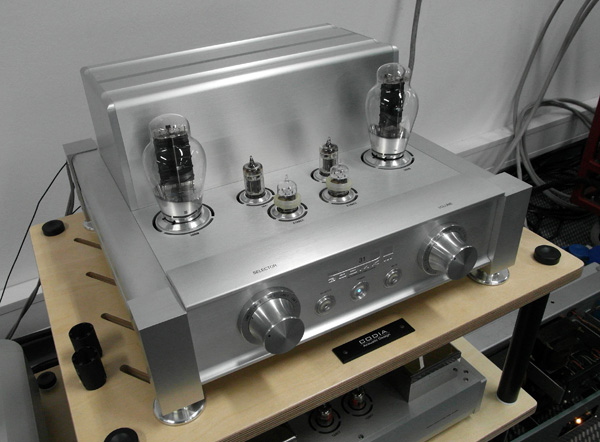
The system, which cost over $100,000 just to pack, insure, and ship to Germany, was sponsored by M.J. Chung, the Korean industrialist and owner of Silbatone Acoustics, whose electronics were used to drive the above-mentioned horns, along with two reproductions of the famed Western Electric 597A tweeter—which, like the compression drivers that drove those horns and a pair of the slightly smaller Western Electric 12A horns, were made by G.I.P. Laboratory of Japan.
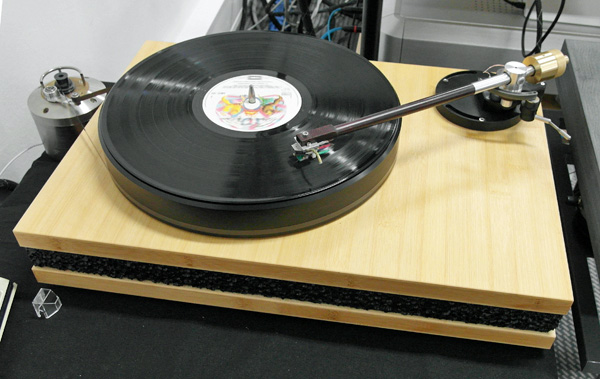
Among the record players used were a turntable/tonearm combination by the noted designer Frank Schroeder, and a vintage 'table restored by tonearm specialist Thomas Schick, whose name is familiar to many Stereophile readers.
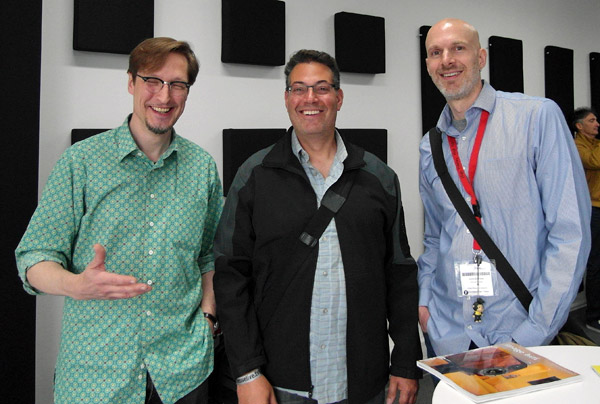
Messrs. Schroeder and Schick were both in attendance—often taking turns as the system deejay—and both are far younger than I ever imagined. (On Thursday, Schroeder (above, left) took the time to pose with Jonathan Halpern of Tone Imports (middle) and John DeVore of DeVore Fidelity (right); I'll return to Thomas Schick and his latest creations in a later post.)
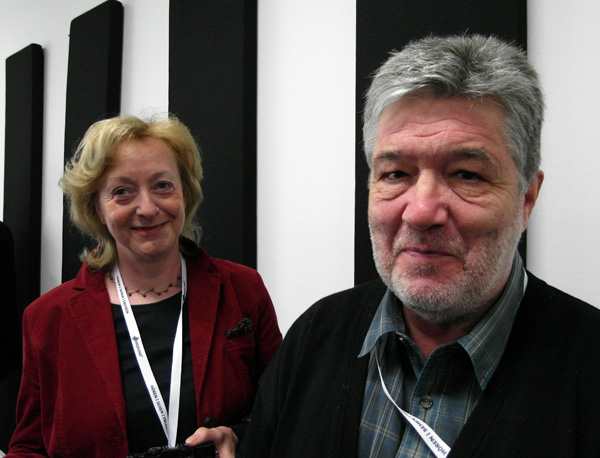
The Silbatone room proved to be the crossroads of this audio world—colleagues from every walk of audio life described it as the highlight of the show—and it was there that I met Auditorium 23 founder Keith Aschenbrenner, and his wife, Monika (above). Considering both the products he has distributed and those he has designed—loudspeakers, turntables, transformers, and cables—one could argue that Keith Aschenbrenner has brought the highest caliber of playback into more homes than almost anyone else on the Continent.
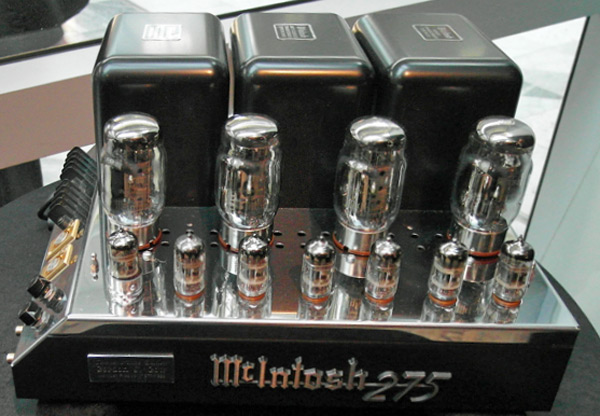
The vintage theme followed me throughout the show: a motif that reoccurred throughout High End 2014, beginning with the liberal use of ancient amps and preamps in decorating some of McIntosh's displays. Odd that I must come so far to see them, when my home is only 120 mile from Mac's Binghamton, NY headquarters.
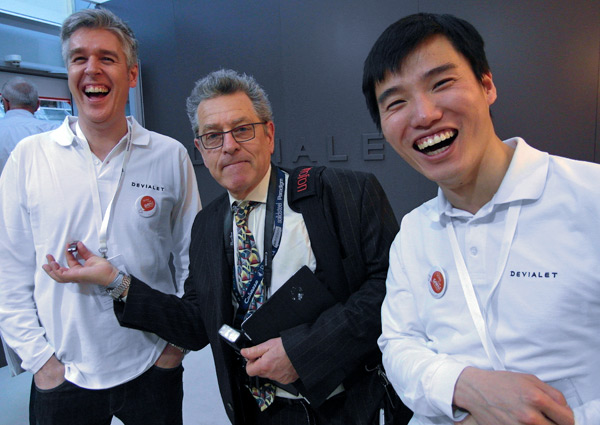
Just as I entered one of two Devialet exhibits, Mikey Fremer (above center) entered from the other direction, and regaled both myself and Devialet's Andy Kennard (left) and Yaohan Yang with a joke that I won't repeat here and now. Kennard, Yang, and other Devialet employees wore buttons proclaiming the arrival of SAM—not the enduringly erudite Sam Tellig, but a Devialet innovation called Speaker Active, Matching, which uses digital signal processing in tandem with a (growing) database of the specs of specific loudspeaker makes and models. The company hopes to have at least two hundred popular speakers in their database by Christmas.
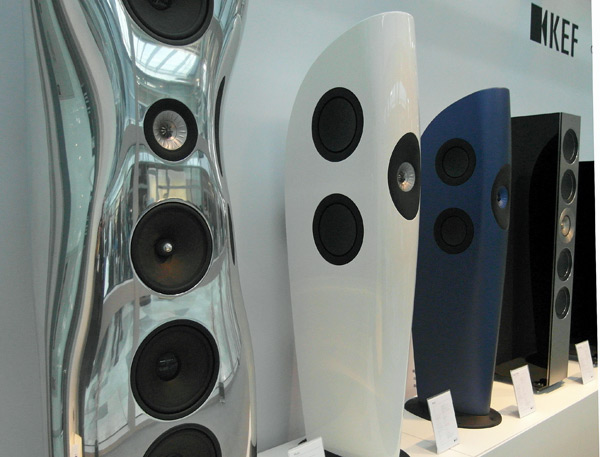
Just down the lane from Devialet, loudspeaker specialists KEF boasted a window display that wouldn't look out of place on the Champs Elysee: From let to right were the KEF Muon, the well-known Blade, the newer-than-new Blade Two, and the KEF Reference 5. The Blade Two, which uses the same main driver as the Blade but smaller side-mounted bass drivers, is scheduled to sell in the US for $24,000/pair, as contrasted with the $30,000 of the standard Blade.

And his wife standing on the porch with her arms folded tight.

Isn't that how we do it take compressional energy (physically) excite a membrane (a microphone) and turn that into voltage and current. The LP is the reverse of that...mechanical movement of the stylus to a voltage generator? Or were you thinking of something else that I missed?

Good thought, but I was thinking cost-no-object, like they recorded Caruso - horn to stylus to disc.

High end audio has never shied away from "here's a pile of money to do X and if you need more just let us know". You might be on to something.

Well, something like that might have been tried. By the Japanese, of course, who seem to have tried just about everything.
Jean Hiraga in the "Nemesis" project article ("L'Audiophile" #34, 1985) wrote about an experimental high-end mechanical record player built by some engineer in Japan back in 1975, used to play a sort of "super 78rpm". It is unclear, however, exactly what this "super 78" record was. Maybe a high-end mechanical recording made for the purpose? I don't know. Maybe we should ask Mr. Hiraga.
Francesco from Italy

I raise the question now and then, but what brought it up this time was a recent article in Stereophile where the author explained how LP players have an advantage over CD's and so on, in that the record playback system (i.e. stylus in groove) generates its own electrical power with its mechanical excursions, while other playback systems have to bring in electronics at an earlier stage, or something like that.
I don't know if I'm conveying the author's intent properly, or whether MC versus MM pickups have any relevance to what he stated, but it seems to me that mechanical recording with even the most advanced devices would carry its own special distortions, contrasted with the electronics etc. distortions generated by conventional recording systems. In a way, like the contrasts between LP playback and CD or WAV playback.

...if we could compare those different distortions?
I'm sure many people would be interested in listening to an electric (analog) vs mechanical vs digital recording of the same music, were such an event possible, someday. I would be surely one of those people.
Let's hope some very rich audiophile is reading this!

Tinny was my first thought too, but I assume that's because Caruso et al recorded into a single non-folded horn that didn't support deep bass. There would also be the problem of groove excursion with deep bass in those days. But if these were solved along with high frequencies, I just wonder if a mechanical-acoustical recording would or could have a purity of sound that electronic recording can't quite duplicate.

For the record, the 12A and 555 drivers on those "snail horns" were also 1926 WE originals. The show started with all original drivers but one 13A developed a ticking sound on peaks. The visitor who noticed the problem complained about the reliability and was reminded that these are, after all, almost 90 years old!! How long will Dr. Dre Beats last?
I must say the "Adam and Eve" of hi-fidelity speakers acquitted themselves sonically quite well among the new and shiny, and provided a worthy musical backdrop for a week of truly rewarding social encounters among old and new friends.


Hey!
I'm amazed those old horns survived all these years and didn't ended up in landfill! Very happy to see that someone see the value and historical important of these old audio treasures enough to save them.

All credit to Silbatone for having made this listening the big baby horns possible at such a show. They have done it before with we16a and we15a yet in some way the Adam and Eve, as JROB puts it, have something very special. Be it their shape, construction, age or simply sound.....great!
I have played with we16a, we15a and we12a & we13a in a domestic setting. You can see my adventures here at my blog www.audio16.com. More articles will follow.
I make as per original the we12a and we13a horns as you can read at my blog. This was necessary......! Because Silbatone has all the originals....dedicated?
All fun...